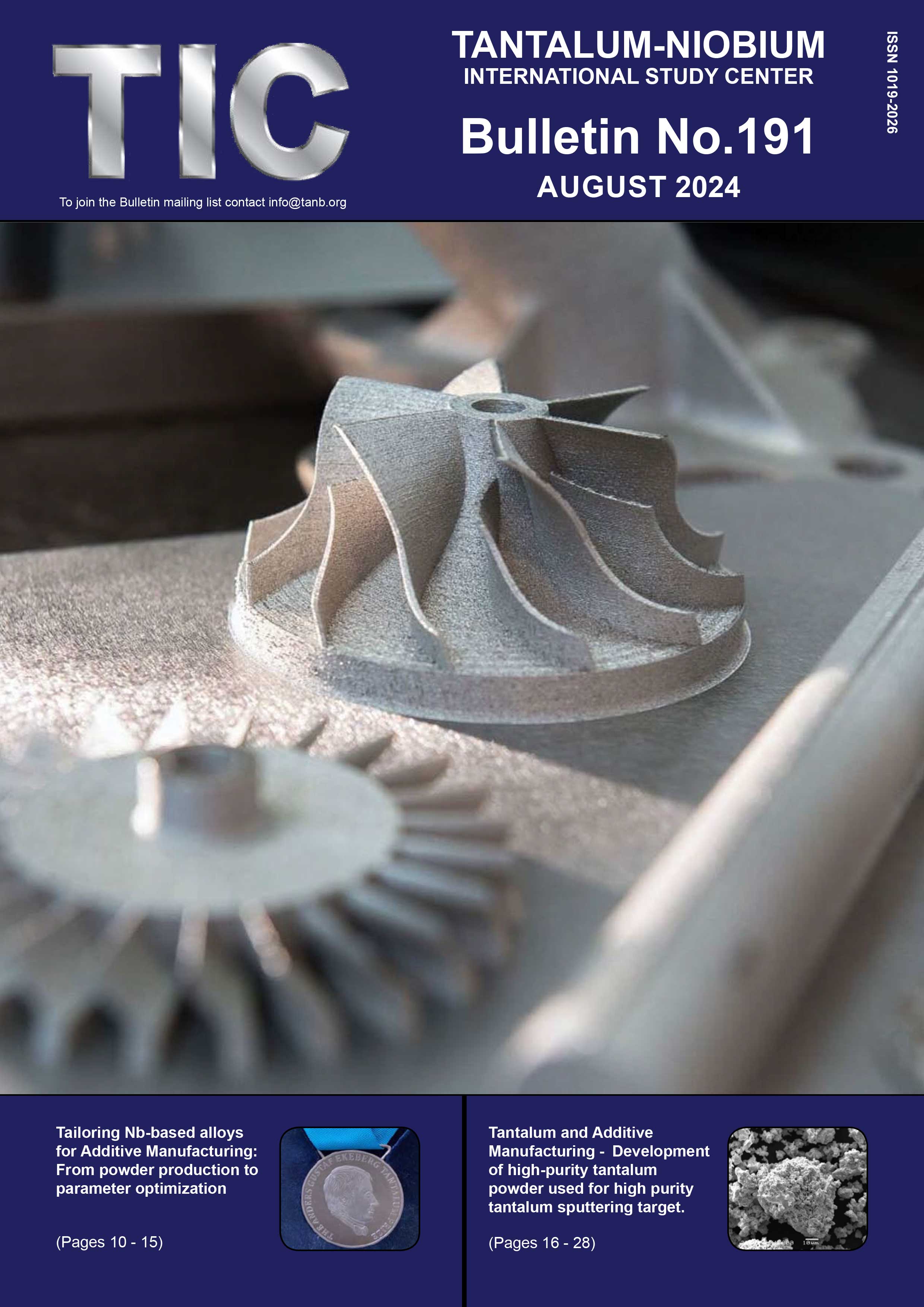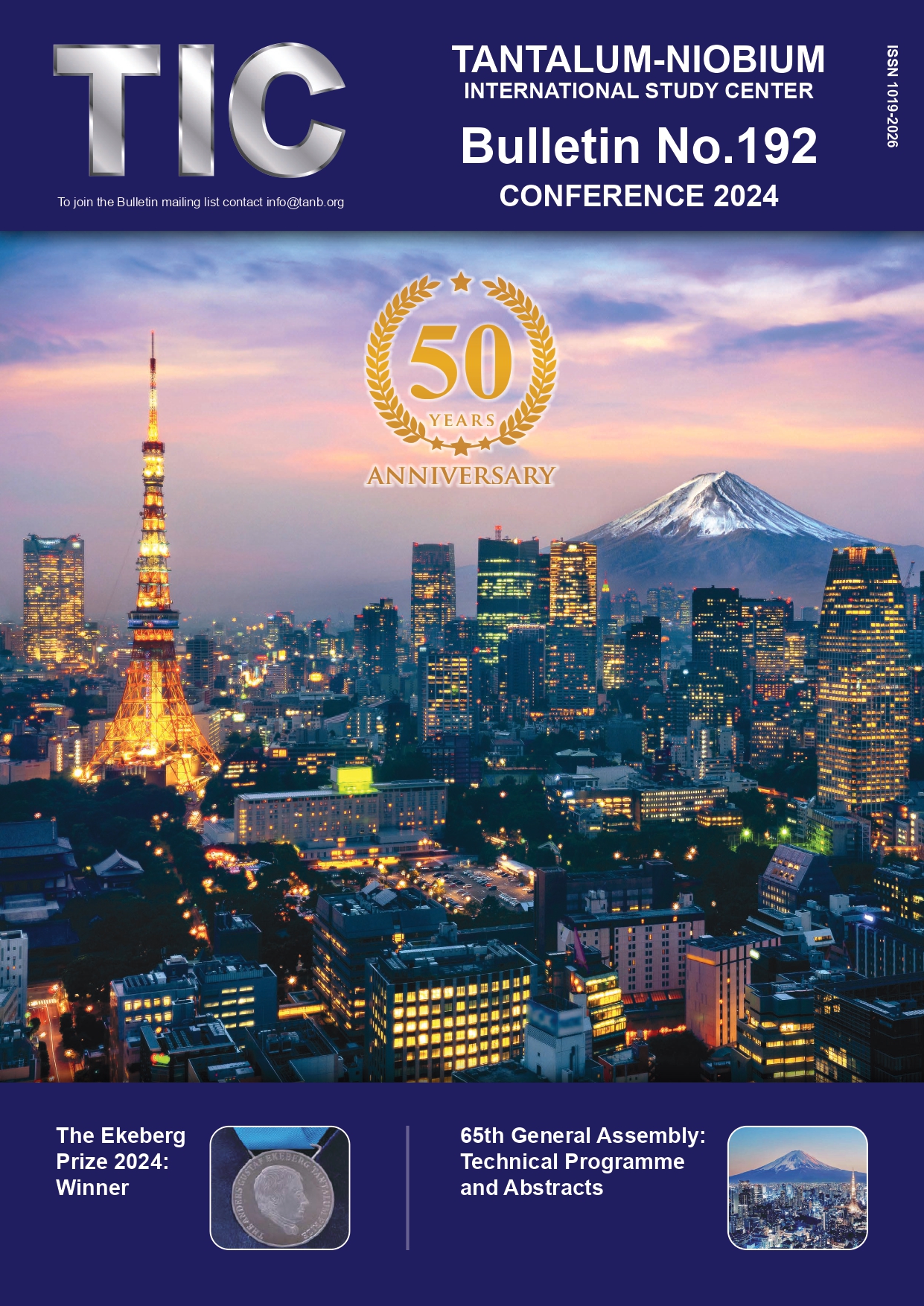Frequently Asked Questions (FAQ)
This page contains brief outlines to some of the more frequently asked questions about tantalum and niobium that are received by the T.I.C.'s Technical Officer as part of the association's 'ask an expert' service to members and non-members.
What is 'coltan'?
'Coltan' is the abbreviated name for 'columbite–tantalite', a group of dense, black metallic ores that contain both niobium minerals (columbite) and tantalum minerals (tantalite) in varying proportions. Columbite is named after niobium's historical name, columbium.
Industry participants often just call this mineral 'tantalite' because the value of the contained tantalite is several times that of the contained columbite. A description of how to calculate the value of columbite–tantalite is available here.
Columbite–tantalite is mined in many countries around the world and further information about its production is available here.
What are the prices of tantalum and niobium?
As an international association the T.I.C. is not allowed to gather data on nor discuss prices, forecasting or future trends, as this would be against our Charter and may raise antitrust and competition law concerns.
It is important to understand that there are no official prices for tantalum or niobium commodities. These metals are not traded on any metal exchange and the price is determined solely by negotiation between buyer and seller.
Some reference prices may be found in the metals industry press, but please note that the T.I.C. does not verify or monitor such information and therefore it cannot assume any responsibility or to be held liable in any way in relation to such information.
Lists of metals industry press and a description of how to calculate the value of tantalum or niobium raw materials are available here.
How do I measure the becquerels per gram (Bq/g) level of my tantalite? (or columbite or tin slag?)
Niobium and tantalum raw materials can contain low levels of thorium (Th) and uranium (U), which leads to these raw materials being treated as naturally occurring radioactive materials (NORM). The determination of whether a material is or isn’t radioactive for all purposes, including transport, is based on guidance issued by the International Atomic Energy Agency (IAEA), although occasionally regulations in individual countries vary from this.
For transport, the IAEA specifies that when the radioactivity concentration is above 10 becquerels per gram (10 Bq/g) a material must be transported as a radioactive material, and based on this the various United Nations regulations on modal transport describe this as Class 7 Dangerous Goods. For tantalum and niobium raw materials the Bq/g level can be determined from the levels of Th and U (or ThO2 and U3O8) in the assay results.
Throughout this website the figures quoted in Bq/g refer to the relevant (parent) nuclide only, in accordance with the values listed in the IAEA regulations SSR-6 of 2012, which have remained unchanged since first introduced in 1996. The conversion factors applied are as follows:
• 1% ThO2= 35.6 Bq/g (1% Th = 40.6 Bq/g)
• 1% U3O8= 104 Bq/g (1% U = 123 Bq/g)
For further information on Class 7, NORM, Bq/g and to read the T.I.C.'s policy please visit the Transport page.
What is columbium?
Columbium and niobium are synonymous names for the chemical element with atomic number 41.
In 1801 the English chemist Charles Hatchett reported a new element similar to tantalum and named it columbium (with the chemical symbol 'Cb'). However, in 1846 the German chemist Heinrich Rose reported a new element and named it niobium. Although columbium and niobium were proven to be the same element in 1866 both names continued to be widely used for many years.
In 1950 the International Union of Pure and Applied Chemistry (IUPAC) officially designated the name to be niobium (Nb), although in the United States the element is often still called columbium.
Further information concerning the discovery of niobium is available here.
How to submit your question to the T.I.C.
To ask your question relating to tantalum and niobium simply contact the T.I.C. through our website here.





